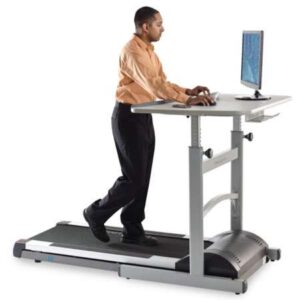

As the United States has transitioned into a service-based economy, more people than ever are spending a tremendous amount of time working in front of a computer. This certainly tends to be much safer and less strenuous work than in a factory, but it isn’t without its own set of risks, as various forms of repetitive stress injury, including back pain, neck pain and carpal tunnel syndrome have become widespread issues among office workers. Here are some ways to reduce or eliminate discomfort as you work at your desk.
- Keep your head up. Spending a lot of time looking down is a good way to give yourself some serious neck strain. Move your computer display to eye level. That means getting a monitor stand to raise it a few inches, or getting a laptop stand and external keyboard to raise your laptop screen upward.
- Get those forearms level. If you lean on your desk or armrests frequently – which tends to happen a lot with laptop usage – you can run into problems with blood circulation and nerve strain. Adjust your position in front of the computer such that your forearms are parallel with the ground, and your elbows are bent at a 90° angle.
- Check your wrist position. Your wrists should be straight up and down and side to side when typing, and they shouldn’t touch the surface of the desk.
- Check your back posture. Adjust your chair height so that your feet are flat on the floor, and your knees and hips are both at a 90° angle. Lumbar support is also helpful here, so if your chair doesn’t offer it, use a small pillow or towel to help your lower spine curvature (generally just above your belt).
There are a range of additional things that you can do, such as getting an adjustable desk, but making some basic changes to improve your posture can make a big difference.
(Source: Elemental Ergonomics)


